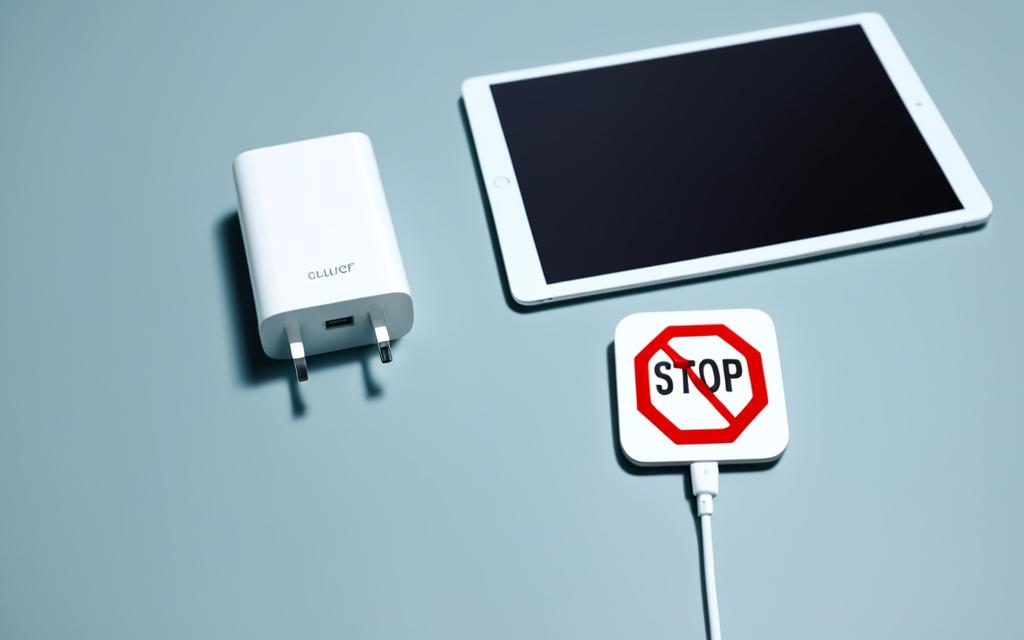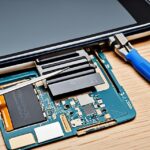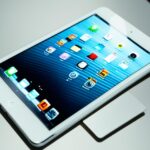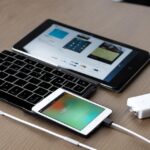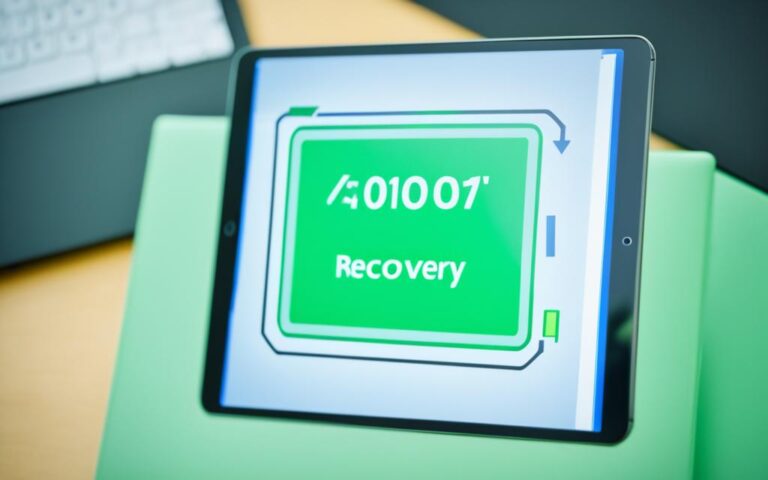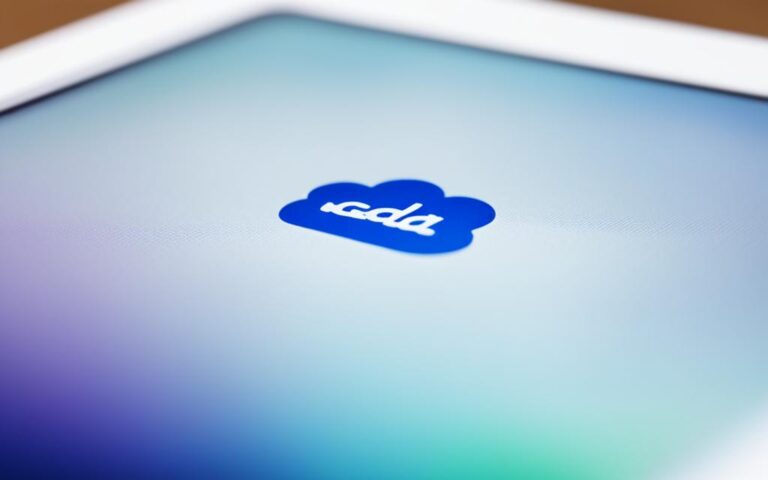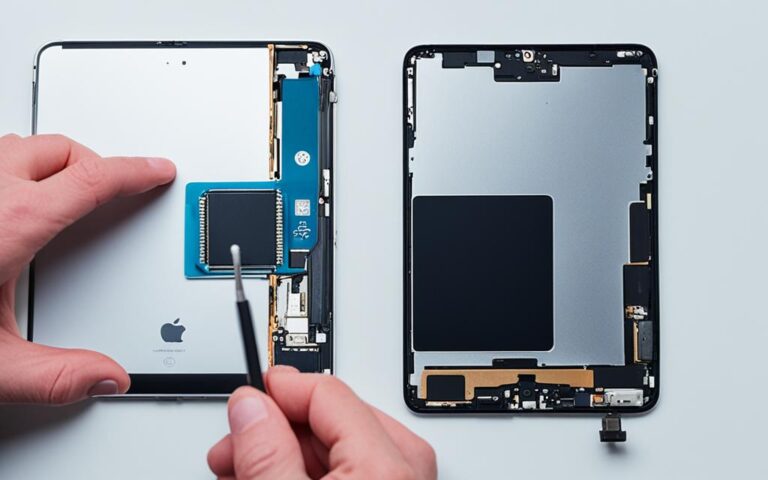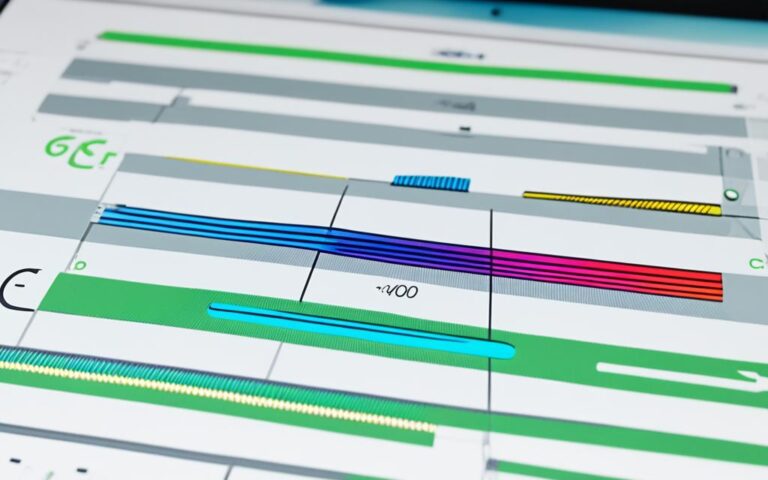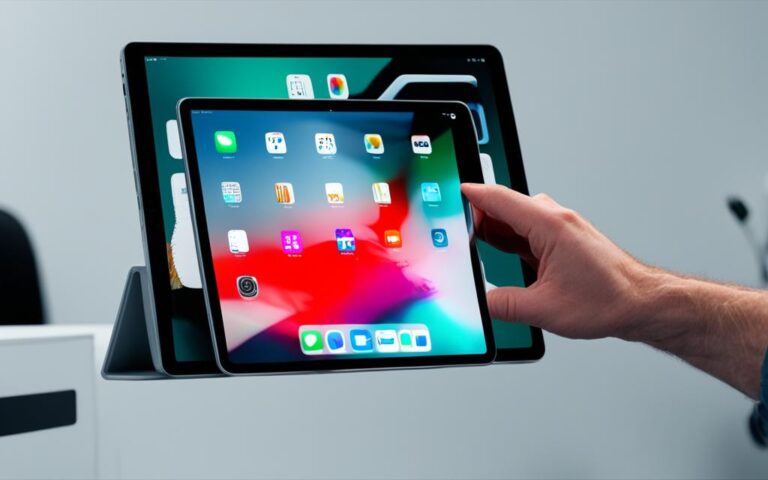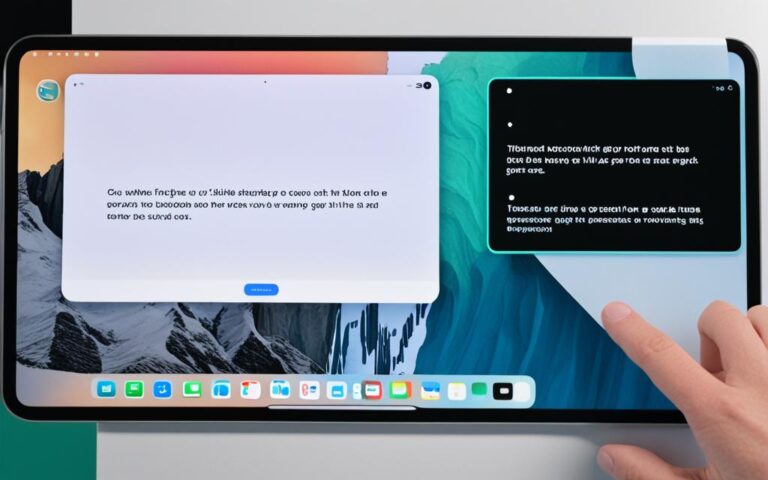Preventing iPad Mini Overcharging Damage
Overcharging an iPad Mini can lead to potential damage and decreased longevity of the device. However, it is important to note that iPads are designed to regulate and optimize charging automatically, so they will not overcharge the battery. When connected to a power adapter for extended periods, the iPad may modify its charging strategy to limit battery charge to around 80% of maximum. This is done to reduce chemical aging that can occur if the battery is constantly maintained at 100% charge. Once a normal charge/discharge routine is restored, the iPad will return to nominal 100% charging.
The Peril of Gravity: Drops and Falls
Accidental drops and falls are the most common causes of damage to iPads, particularly the screen. The impact from a fall can result in screen cracks, corner dents, frame bends, and even internal damage to the device. To prevent these types of damages, protective measures such as using cases and covers, screen protectors, and grips or straps can be taken to secure and protect the iPad from accidental drops and falls.
| Protective Measures | Advantages |
|---|---|
| 1. Cases and Covers | Provide cushioning and shock absorption |
| 2. Screen Protectors | Prevent scratches and cracks on the screen |
| 3. Grips or Straps | Increase grip and prevent accidental slips |
By implementing these preventive measures, iPad users can significantly reduce the risk of screen damage caused by drops and falls. The combination of protective cases and covers, screen protectors, and grips or straps will safeguard the iPad from the perils of gravity and ensure its long-lasting functionality.
iPads Can’t Swim: Liquid Damage
Liquid damage is another common cause of iPad damage. Accidental spills, bathroom mishaps, and outdoor exposure to rain or poolside accidents can all lead to liquid damage. When liquid enters an iPad, it can cause short-circuits and corrosion, potentially damaging internal components.
To prevent liquid damage, it is important to handle iPads with care, avoid using them near liquids, and immediately power off and dry the device if it comes into contact with any liquid.
The Dangers of Liquid Damage:
Short Circuits: When liquid enters an iPad, it can create an electrical connection where it shouldn’t, resulting in short circuits that can damage the device.
Corrosion: The presence of liquid can cause corrosion on the internal components of the iPad, leading to malfunction or failure.
Internal Damage: Liquid can seep into sensitive areas of the iPad, damaging circuitry, connectors, buttons, and other essential components.
Preventing Liquid Damage:
- Handle with Care: Be mindful of your iPad’s proximity to liquids and take extra precautions when using it near water sources, such as in the kitchen or bathroom.
- Avoid Using Near Liquids: Keep your iPad away from water-filled areas, including swimming pools, beaches, and bathtubs.
- Use Protective Cases: Invest in a waterproof or water-resistant case to provide an additional layer of protection against accidental spills.
- Power Off and Dry: If your iPad comes into contact with liquid, immediately power it off, unplug any connected accessories, and dry it thoroughly using a soft cloth or towel.
- Seek Professional Help: If your iPad sustains liquid damage, take it to an authorized service center for assessment and repair. Attempting to repair it yourself may cause further damage.
In order to protect your iPad from liquid damage, it is essential to be cautious when handling it near liquids and take immediate action if a spill or accident occurs. By following these preventive measures, you can ensure the longevity and functionality of your iPad.
Under Pressure: Screen Damage
The iPad’s screen is highly susceptible to pressure and impact damage. Placing heavy objects on the iPad, stepping on it, or aggressive typing can lead to screen cracks or complete failure. Additionally, sharp objects in bags or pockets can easily scratch the screen, compromising its clarity and functionality.
Preventive Measures
To avoid screen damage and ensure the longevity of your iPad, it is essential to adopt preventive measures. Here are some practical steps you can take:
- Use a screen protector: A high-quality screen protector can act as a barrier between the screen and potential scratches or cracks caused by external objects. It provides an additional layer of protection without compromising touch sensitivity or display clarity.
- Choose a protective case: Opt for a durable and shock-absorbent case that covers the edges and corners of your iPad. This helps safeguard the screen from accidental drops or impacts, reducing the risk of cracks or shattered glass.
- Exercise caution: Avoid placing heavy items on top of your iPad or exerting excessive pressure while using it. Be mindful of where you set your device and ensure it is on a stable surface to minimize the chances of accidental damage.
- Keep it separate: When storing your iPad in a bag or pocket, ensure there are no sharp objects like keys or pens that could scratch the screen. Consider using a designated compartment or protective sleeve to keep your iPad safe from potential screen damage.
- Proper handling: Handle your iPad with care, avoiding rough or forceful interactions with the screen. Gentle touch and responsible usage can significantly minimize the risk of screen cracks or failures.
If your iPad’s screen does sustain damage, there are options available for repair. Depending on the severity of the damage, you may choose to consult a professional repair service or explore do-it-yourself (DIY) repair kits, which are readily available online.
Conclusion
To protect your iPad Mini and ensure its longevity, it is essential to follow preventative measures for common types of damage. Accidental drops and falls are a leading cause of iPad damage, particularly to the screen. By using protective accessories such as cases, screen protectors, and grips or straps, you can significantly reduce the risk of cracks and dents caused by gravity. It is equally important to handle your iPad with care and avoid exposing it to liquids to prevent potential short-circuits and internal damage.
Screen damage can also be avoided by using screen protectors and choosing cases that have impact-absorbing features. Additionally, being mindful of pressure on the screen from heavy objects or excessive typing can prevent cracks and failure. Protecting the battery from damage and wear is crucial for maintaining the optimal performance of your iPad Mini. Charging practices should align with recommended guidelines and avoiding overcharging can help extend the battery’s lifespan.
By implementing these iPad damage prevention tips and taking proper care of your device, you can enjoy a seamless digital experience while protecting your investment. Invest in quality accessories, handle your iPad responsibly, and follow charging best practices to safeguard your iPad Mini and ensure its longevity.
